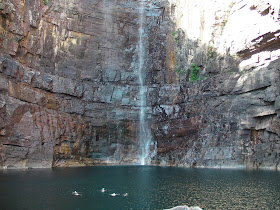There is nothing timid about the motivations
of the new Museum of Islamic Art. Rising on its own island just off the city’s just
now developed waterfront corniche, it is the centerpiece of an massive effort
to transform Qatar into an arts destination. The museum’s colossal geometric
form has an ageless quality, evoking a past when Islamic art and architecture was
a nexus of world culture. At the same time it conveys a hope for reconnecting
again. The museum of Islamic art draws much influence from ancient Islamic
architecture yet has an exclusive design. It was the first of its kind in the
Persian Gulf and has a very large collection of Islamic art, plus a study, a
library, and numerous restaurants. Sabiha Al Khemir served as the founding
director of the museum from 2006 to 2008. The museum has a total area of 45,000
m2 and lies on the edge of Doha harbor at the south end of Doha Bay.
It’s construction done by Baytur
Constr.Co. (Turkey), which is completed in 2006, but the interior was subjected
to a range of changes thereafter. The museum celebrated a VIP opening on
November 22, 2008, and opened to the general public on December 1, 2008. The lovely
building seems austere by the standards of the flashy attention-grabbing forms
that we have come to associate with Persian Gulf cities like Dubai and Abu
Dhabi. It is designed by I. M. Pei, 91, who has described it as his last major
cultural building, it recalls a time when architectural expression was both
more earnest and more optimistic, and the rift between modernity and tradition
had yet to reach full pitch.
The museum, which consist houses
manuscripts, textiles, ceramics and other works generally assembled over the
last 20 years, has emerged as one of the world’s most encyclopedic collections
of Islamic art. The origins of its artifacts range from Spain to Egypt to Iraq,
Iran, Turkey, India and Central Asia. The architecture is very solid and simple
and there is nothing unnecessary. The imposing simplicity of this new museum is
brought to life by the play of light and shadow under the gulf’s blazing sun. Doha
in various ways is virginal and there is no real context there, no real life
unless you go into the souk. It is seen from across the water is gorgeous
sand-colored stone blocks call to mind the Tunisian fortresses it is modeled
after. The museum is an object and it is treated as a piece of sculpture.























































